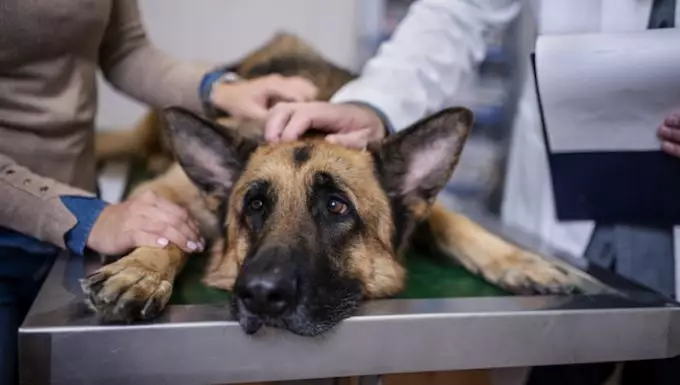Hemangiosarcoma is one of the most aggressive forms of cancer that can inflict our canine companions. This malignancy primarily arises from the blood vessel cells, leading to the development of tumors that can spread rapidly throughout various organs, including the spleen, liver, and heart. Primarily seen in older dogs, this condition can be devastating, and certain breeds such as Boxers, Labrador Retrievers, and German Shepherds show a troubling predilection for this life-threatening ailment. As responsible pet owners, it’s crucial for us to recognize the signs and act swiftly, seeking medical intervention at the first inkling of trouble.
Recognizing the Signs: The Subtle Indicators
Symptoms of hemangiosarcoma can often be subtle, making early detection a profound challenge. Signs such as lethargy, a sudden loss of appetite, pale gums, and labored breathing may emerge gradually, leading owners to dismiss these warning signs as typical aging or minor ailments. However, the reality is stark; these aren’t just signs of getting older—they’re red flags signaling that immediate veterinary intervention is necessary. Our dogs cannot voice their suffering, and it falls upon us to interpret their behavior and physical cues diligently.
Recurrent coughing, vomiting, and episodes of collapse constitute alarming indicators that should send any pet owner rushing to the veterinarian. Indeed, with hemangiosarcoma, every moment counts. Empty promises of better days rest on recognizing issues early, marking a jagged line between hope and despair for our furry friends.
Diagnosis: A Multi-Faceted Approach
When hemangiosarcoma is suspected, veterinarians undertake a comprehensive approach to reach a diagnosis. Initially, they delve into the dog’s medical history and symptomatology before executing a thorough physical exam. Diagnostic clarity can often hinge on test results, which include bloodwork and imaging modalities like X-rays or ultrasounds. In some cases, a biopsy may be required to definitively identify the presence of tumor cells.
It’s essential for the diagnosis process to be transparent and collaborative between owner and veterinarian. Open dialogues should prevail where owners can share observations and concerns freely. This partnership becomes instrumental in creating a tailored and swift response plan to combat this aggressive cancer.
Treatment and Ongoing Care: A Call to Action
Once diagnosed, the treatment journey that follows is often fraught with emotional upheaval. Surgical removal of the tumors offers the most hopeful pathway, but it’s not the only option on the table. Chemotherapy and radiation therapy can augment treatment efforts, providing precious time and improving quality of life. Medications may also serve to manage symptoms, reinforcing that tackling hemangiosarcoma goes beyond physical treatment—it’s an empathetic approach to fostering comfort amidst distress.
As caretakers, our roles shift to becoming vigilant providers of care, ensuring that medications are administered correctly and that our dogs have a serene environment conducive to recovery. Regular check-ups with the veterinarian are paramount, offering assessments and the reassurance that their condition is being monitored diligently.
In our fight against hemangiosarcoma, knowledge is indeed our greatest weapon, and staying informed will empower us to confront this challenge with resilience and compassion as we advocate for the well-being of our beloved pets.

